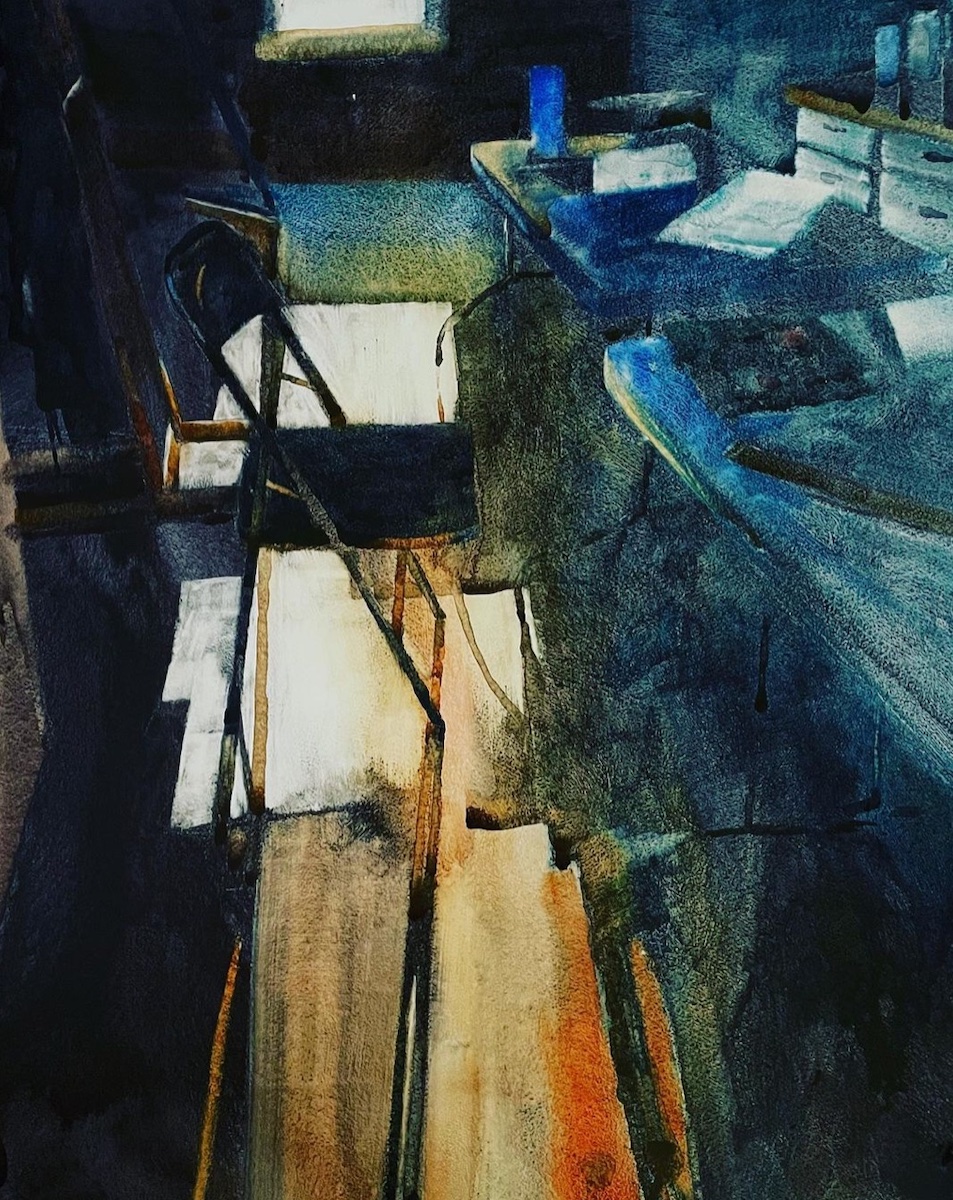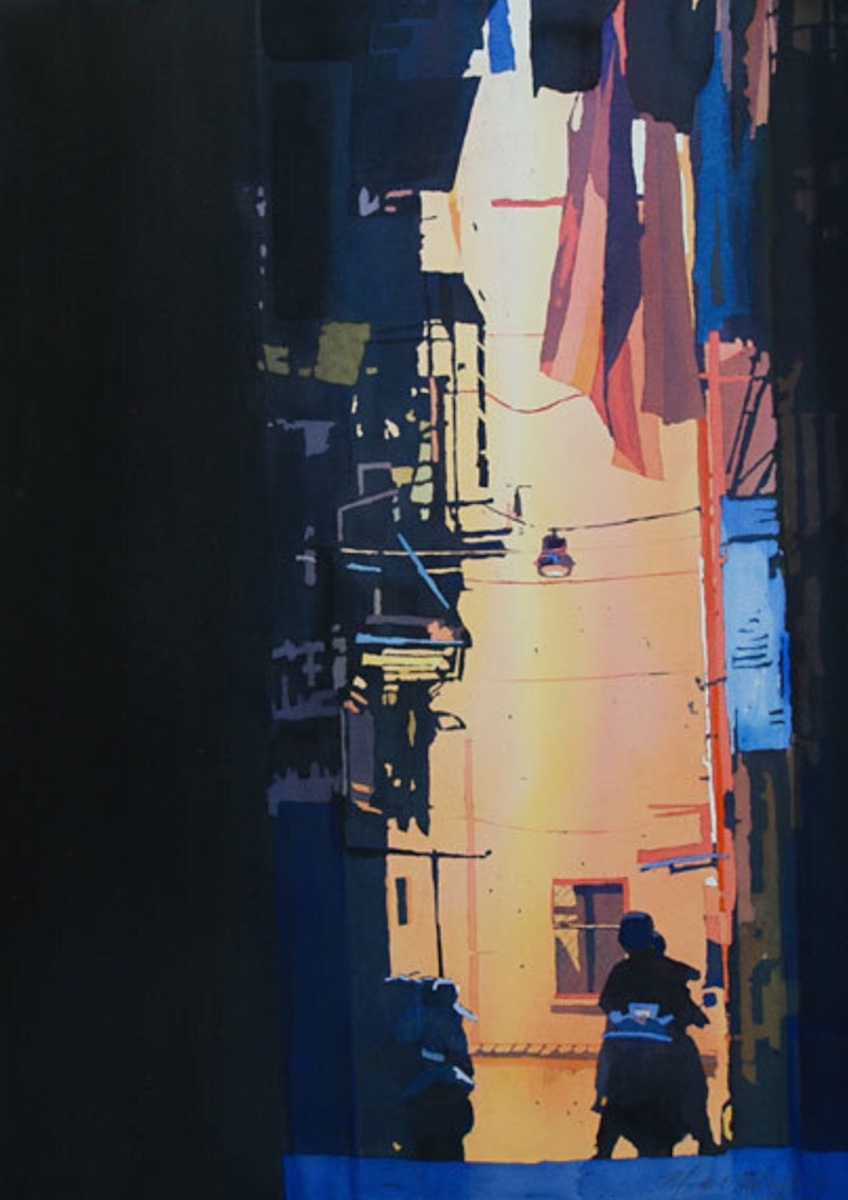by Laura Vailati
Art enthusiast and Editor at Miami Niche

“I would never be able to live far from here,” says Mark Mehaffey of the strip of land on which he was born and raised in Michigan. Michigan is the land of lakes, but also the land of dunes and beaches. It’s a land that the artist elevates as the undisputed protagonist of his paintings and where the presence of a living being, be it man or animal, represents a narrative detour too important for the celebration of nature’s greatness.

In addition to being the author of two books, Mehaffey has dedicated his life to teaching art: first in public schools, where he taught for more than 30 years, and later privately, conducting workshops around the world.
Although a signature member of the America Watercolor Society and many other prestigious institutions dedicated to watercolor, he prefers to describe himself as “an artist who uses watercolor.” It’s a completely different approach that offers the viewer a less limiting idea of this multifaceted artist.
The approach to naturalistic art implies for the artist a process that prescinds from the intentional use of one medium rather than another, since, as Mehaffey himself claims, “watercolor, whether transparent or opaque – like acrylic for that matter – represents only the means of concretely translating my idea onto paper or canvas.” The paper can be of simple cotton, covered with several layers of gesso, or made of polypropylene (YUPO), which the artist uses in varied ways in his demonstration sessions, to highlight the various characteristics of the mediums used.

However, it’s the ideas that give rise to Mehaffey’s compositional process. They originate from many inspirational sources, given the artist’s many interests, which transcend narrative, and which have given him the opportunity to live a varied life that’s “perhaps not always exhilarating, but certainly fun,” he says.
Looking at his paintings, the versatility with which he approaches mediums immediately jumps out at you: in fact, it’s surprising to see how a painting he made in watercolor or acrylic can render the effect of, for example, colored pencils.
Mehaffey also expresses this versatility in his varied use of artistic styles for which he contrasts broad backgrounds with abstract forms capable of making his works completely different from one another.

The artist’s secret, in addition to his honed knowledge of techniques, is inherent in the special consideration he has of the compositional process that derives from a continuous work in progress, culminating in a final, intentional composition. “The next step is always determined from the previous step,” says Mehaffey, who adds that, for him, the making of a painting habitually begins with a sign.
This sign can be given by a brushstroke, a texture, or simply a wash, from which springs a set of chain reactions that revolve around the hypothetical “if.” What if I did this, what if I did that,” declares the artist arranging the next action in a continuous mental re-planning of the painting, with which he is constantly in dialogue.
With a compositional process as fascinating as it is complex, it is natural to wonder what the final moment of the work might be, which, like the process of making, requires a period of rest before being completed. During this period, in which the artist confines the painting to some corner of his studio, are the time and the relationship between the eyes and the mind that determines what comes next. He then decides whether to intervene with further compositional steps or simply signing the painting and calling it finished.

“Sometimes this approach drives me crazy,” Mehaffey says. But he also acknowledges the benefit of having a continuous source of inspiration, allowing him to make multiple works at once. He adds, “So many times I find myself wishing I had three or four lifetimes to realize all the ideas in my head.”
If the compositional process he uses to create a landscape is compact and instinctive, the one he uses to compose a figurative painting is much simpler. To make a figurative work, Mehaffey makes different preparatory sketches and moves from the basic principles imparted in the study of art: tonal values and composition, which he considers to be more important than the study of color values.
Whether it’s the depiction of a landscape rather than a figure or the use of watercolor rather than acrylic, what matters, he assures us, is, “Whatever you decide to do make sure to work very hard on it.” Advice offered to him by his father when he was a boy and which he nowadays strongly recommends to anyone, regardless of whether or not they want to be an artist.
Mark Mehaffey would rather be too bold than too timid in his painting — a philosophy that helps him push the limits of color and value in his dramatic watercolor landscapes. In Painting a Dramatic Landscape in Watercolor, he focuses on the four basic elements of drama to create an electrifying mountain scene. You’ll learn to harness contrast and balance to make your colors leap from the paper.







